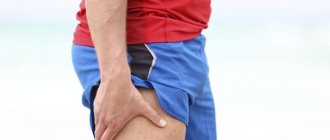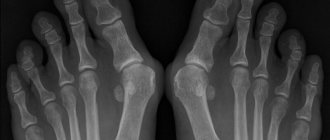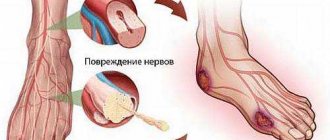Swelling in the ankles not only disrupts the aesthetics of beautiful female legs, it may be the body’s first signal about the development of internal pathology. Timely identification of the cause of swelling of the ankles in women is necessary in order to know how to treat a possible disease.
According to reviews from some patients who turned to doctors for help in a timely manner, careful diagnosis and measures taken helped them cope with discomfort and also prevented possible complications.
Why women of different ages have swelling at the ankles, we will consider below. This problem affects self-esteem, deprives you of confidence, makes you feel embarrassed and hide your legs. But the main thing is that with constantly occurring swelling, pain and numbness appear, especially when the shoes fit tightly to the feet (burning, tingling). If the necessary measures are not taken, over time the sensitivity of the affected areas will be partially lost.
Injury
The reason for the development of edema in the ankle area in women who lead an active lifestyle and play sports, but do not have proper training and wear the wrong shoes. Traumatic leg injuries also often occur in obese women who love high-heeled shoes. An injury causes ankle swelling, bruising, and severe pain.
Damage can also cause the formation of a benign tumor, which is filled with fluid and forms persistent swelling. Such a tumor is removed surgically.
Microtraumas that cause swelling are also caused by wearing shoes that are too tight. This disrupts the normal movement of lymph and blood, causing fluid to penetrate through the vascular walls into the intercellular space and accumulate in it, forming edema.
Vein diseases
Varicose veins are a very common cause that leads to disruption of the outflow of lymph in the ankle area, resulting in congestion in the vessels. In addition to swelling, patients complain of a feeling of fullness and heaviness in the legs. With this disease, blood clots begin to form, which block the lumens of blood vessels, causing disruption of blood circulation, which poses a serious danger not only to health, but also to human life. The disorder can affect either one or both legs at once, depending on which the formation of unilateral or bilateral edema will occur.
Kinds
Depending on the etiological factor, experts distinguish several types of swelling of the lower extremities:
| View | Causes | Clinical features |
| Stagnant | Associated with increased venous pressure and increased permeability of vascular walls. Usually observed with thrombophlebitis and varicose veins. | Initially they appear only in the evening, and by the morning, after a night's rest, they disappear on their own. In the future, they are saved permanently. The swelling is unevenly expressed. To a greater extent, it is observed near the affected veins. Congestive swelling is usually combined with a feeling of heaviness in the limbs, and sometimes the legs may hurt. With varicose veins and thrombophlebitis, usually only the left or right leg initially swells, where the pathological process is most pronounced. |
| Hydremic | Caused by impaired renal excretory function (acute and chronic glomerulonephritis, acute and chronic renal failure). | They last a long time. They are often combined with increased blood pressure, proteinuria, and increased levels of urea and creatinine in the blood. |
| Neuropathic | Uncompensated diabetes mellitus and alcoholism. In these diseases, the nervous innervation of the tone of the vascular wall is disrupted, which contributes to blood stagnation and the leakage of plasma into the soft tissues. | There is a history of alcohol abuse and diabetes mellitus. |
| Cachexic | Occurs in patients with severe anemia, during protein starvation and in the terminal stage of development of malignant tumors. | The general exhaustion of the patient is noteworthy. |
| Allergic | Contact with a substance to which a person is hypersensitive. | Swelling is combined with itching, redness of the skin, and the appearance of a rash. |
| Mechanical | Caused by mechanical compression of blood vessels, for example, by a tumor. | Characteristic is a gradual increase in swelling. |
Infection of wound surfaces in the ankle area
Injury to the skin in the ankle area occurs more often in the summer. If infection penetrates into the wound, an inflammatory process develops. It leads not only to swelling, but also to the following consequences:
- pain in the injured ankle, which increases significantly when walking;
- redness of the skin around the injured area;
- discharge of pus from the wound;
- local, increased temperature at the site of inflammation, and in severe cases - general;
- weakness and weakness due to severe inflammation.
Swelling, like other symptoms of the inflammatory process, will disappear after treatment. It will be aimed at eliminating the causative agent of inflammation and activating tissue regeneration. Ignoring such a condition is extremely dangerous, as it can lead to sepsis and loss of a limb, or even death.
Prevention
In some cases, making certain lifestyle changes can help prevent or relieve swollen feet and ankles. For this:
- Check your feet frequently for bruises, cuts, and scrapes, especially if you have diabetes.
- exercise regularly
- Eat a healthy diet that helps support heart, kidney, and liver health
- avoid contact sports that can cause injury to your feet and ankles
Pathologies of a number of organs
A number of diseases are often accompanied by the development of swelling of the legs in the ankle area. In women, such edema is usually observed in cases of kidney disease, heart muscle disease, diabetes mellitus or lymphostasis. To begin therapy, it is necessary to accurately determine the pathology that caused the problem. It will not be possible to effectively cope with leg swelling that occurs due to diseases on your own.
Depending on which systems and organs are affected, the level of danger of the pathology to life is also assessed. In most cases, if treatment is not started, the patient's condition quickly progresses and worsens. All kidney and heart diseases, as well as diabetes, are considered life-threatening, which is why they cannot be ignored.
Why do women's legs swell?
A large number of women experience edema syndrome associated with the characteristics of the hormonal cycle.
- In this case, swelling of the legs can develop as in menstruating women in the premenstrual syndrome program against the background of a drop in the level of progestins
- and in menopausal or postmenopausal women, as idiopathic edema.
- Idiopathic edema is characterized by water retention in the legs, arms and face in an upright position. Swelling is combined with depressive syndrome and weight gain.
- Legs swell after childbirth in cases where pregnancy provoked the development of venous insufficiency or was the cause of phlebothrombosis or thrombophlebitis.
Eating disorders
Poor nutrition and drinking too much fluid before bed can cause severe swelling in the ankles. During sleep, all metabolic processes slow down, which is why excess fluid in the body is not excreted by the kidneys. It penetrates into the intercellular space, and as a result, swelling is formed not only in the ankles, but also in the face.
A diet high in salt also causes swelling, especially in the ankle area. Excess salt causes fluid retention in the body, which causes excess salt to form. The situation is further aggravated by a lack of potassium in the diet, which has a diuretic effect and normalizes the process of removing fluid from the body. Fatty and spicy foods also retain excess fluid in the body. It has an attractive taste and therefore is often present in the diet of those who do not think about healthy eating.
Insect bites
Also a common cause of the problem during warm periods. In most cases, insect bites are almost invisible and cause only redness of the skin and short-term itching. If a local allergic reaction develops to them, or a person is bitten by a stinging insect (wasp, bee, hornet), or snake, then the swelling develops quickly and can reach large sizes. In this case, the ankle has an appearance similar to that which occurs with thrombosis. The swelling is one-sided and is accompanied by pain and a general deterioration in well-being. In case of snake bites, medical attention is required. When bitten by stinging insects, the swelling usually goes away within 3-4 days. To speed up recovery, it is advisable to take antihistamines, which will help reduce the intensity of allergic reactions to insect venom.
If your ankle swells for this reason, moving your leg will usually make the pain worse. It is also not possible to wear shoes with heels due to increased pain. Since tights are not a barrier to bite for snakes and insects, women may encounter such a problem even not in the warmest weather, but when these insects and reptiles have already begun to wake up after winter.
Sedentary or standing work
When you have to work while standing or sitting all day, this negatively affects the blood circulation in the legs, which ultimately causes the development of swelling in the ankles in the evening. When a person is standing, the legs take on the entire weight of the body, which, with prolonged stress, causes disturbances in the functioning of the venous valves, which in turn leads to congestion. Because of them, swelling develops. It is not natural for the venous system to pump blood from bottom to top for a long time, and it definitely needs rest to maintain health.
During sedentary work, the main physical load falls on the pelvic region, where veins and arteries pass, providing blood circulation to the legs. A sitting position leads to compression of blood vessels and disruption of blood circulation in them. As a result, the vessels, pumping blood from bottom to top, begin to work worse and it stagnates. As a result, such stagnation leads to the development of swelling in the ankle area in the evening hours. For office workers, the situation can be further aggravated by uncomfortable tight high-heeled shoes, which lead to incorrect foot position. This further impairs blood circulation and local metabolism. Such swelling is usually accompanied by evening leg pain.
Swelling of the ankles - what is it?
Ankle swelling is a pathological process that everyone has encountered at least once in their life. Due to the physiological characteristics of the body, ankle swelling is more often diagnosed in female patients.
It is important to understand that swelling is not only a cosmetic problem. Characteristic symptoms of swelling: pain in the ankle on the outside, redness and swelling of the skin negatively affect the usual rhythm of life. There are problems with choosing shoes. Excessively tight shoes put pressure on the foot, which leads to partial loss of sensitivity and significantly complicates the ability to move.
If ankle swelling does not go away after a short rest and increases in size, you should visit a doctor's office as soon as possible. Such alarming symptoms may indicate the development of dangerous diseases that require timely diagnosis and treatment.
Pregnancy period
Pregnancy is a serious test for the whole body. In women, swelling of the legs in the ankle area is common during this period. They appear from the 2nd trimester and persist until childbirth. The phenomenon is due to the fact that the uterus, which is increasing in size, puts pressure on the vessels located in the abdominal cavity, squeezes them and disrupts blood circulation in the legs, where it is much more difficult for the vessels to make the blood rise up than to lower it down. Therefore, due to its stagnation during pregnancy, the legs are primarily affected. The swelling is soft to the touch and not dense. They are often noticed only because the socks leave a mark on your feet. Such swelling is not dangerous, and to avoid it, you just need to reduce the load on your legs and organize the correct water consumption regimen. Wearing compression stockings is also helpful, as they help reduce stress on the veins.
During pregnancy, edema can also be pathological. They occur in the case of late toxicosis simultaneously with high blood pressure, rapid weight gain and the appearance of protein in the urine. This condition requires mandatory medical intervention.
Causes of unilateral edema
If swelling has formed on only one limb, it is easier to identify the source of the problem. A person should determine the degree of pain in order to record the cause of the problem:
- Injury. If a person has suffered an injury, sprain or bruise to the ankle, the swelling may cause mild, moderate or severe pain. It depends on the severity of the damage, and swelling is formed due to hemorrhage of ruptured blood vessels.
Swelling also occurs with an ankle fracture. In this case, the patient should immediately go to a medical facility, where he will be given a plaster cast. If you neglect to go to the doctor, the fracture can cause more serious illnesses.
- Thrombosis. With this disease, a blood clot forms in the veins, which partially or completely blocks them. Swelling most often occurs on one leg and occurs with severe pain. The problem also occurs in the early stages of thrombosis.
- Infection. Swelling of the ankles can be caused by various infectious diseases. These include skin diseases such as abscesses, purulent formations on the skin and bones, as well as phlegmon and other skin pathologies.
- Inflammation. Swelling caused by arthritis and arthrosis appears due to improper load on the joints of the legs, especially in the ankle area. Pinching of the blood vessels is formed, as a result of which swelling appears on the right or left limb.
- Insect and amphibian bites. They cause an allergic reaction, which causes swelling of the ankle. This is due to the poison that is released by insects during a bite. This swelling usually goes away after a few days. What to do if your leg is swollen after an insect bite is described here.
- Varicose veins Patients often observe swelling of the legs at the ankles in the morning or evening and only on one leg. This happens due to a malfunction of the heart and accumulation of fluid in the tissues. The skin in the area of swelling acquires a reddish tint and becomes warm to the touch.
- Other reasons and factors. There are a number of other reasons that can cause swelling in one leg at the ankle: flat feet;
- impaired metabolism;
- low hemoglobin level;
- foot fungus.
Hot weather
Hot weather provokes the development of swelling of the legs in women around the ankle. When it is hot, excessive amounts of salts are excreted from the body through sweat. As a result, their deficiency occurs, which, like an excess, leads to disruptions in the functioning of the venous system. The vessels of the peripheral circulatory system are dilated in hot weather to prevent overheating. But in turn, this causes a deterioration in the outflow of blood back to the heart, which further complicates the work of the veins, as a result of which the vessels cease to cope with their work and stagnation occurs, forming an excess of fluid in the tissues of the body.
Even in the case when the swelling goes away quickly, it is worth paying attention to them, since the phenomenon indicates that there are weak points in the body, and these are the veins of the legs. In such a situation, if there is a heavy load on them for a long time, as well as with age, there is a risk of developing varicose veins. Timely prevention can prevent the problem.
Features of the therapeutic approach
Short-term swelling of the legs goes away after eliminating external causes. It is enough for a person to change uncomfortable shoes, adjust his diet and drinking regime, and get a massage.
Experts also recommend that the patient take a horizontal position and place his feet on a hill. You can take a cool foot bath or use a cold compress.
What to do if swelling persists? Prolonged manifestation of the symptom requires an integrated approach, including drug therapy and the use of folk remedies.
Attention! Prescribing each type of treatment is possible only after receiving medical advice.
Drug therapy
To relieve and reduce the manifestation of the symptom, experts prescribe topical agents - ointments, gels and sprays with a cooling effect. The drugs help strengthen the walls of blood vessels and improve blood circulation, including capillary circulation. So, if your ankle is swollen due to the development of varicose veins, Essaven gel will be one of the most effective venotonics. The drug stimulates blood circulation and relieves fatigue.
Edema is also treated with diuretics, which help remove fluid from the body. This group of drugs is especially relevant during pregnancy. Preference is given to herbal-based medications, for example, Canephron or Phytolysin.
If the ankles are severely swollen due to poor functioning of the cardiovascular system, potassium-sparing agents (Veroshpiron) are prescribed.
Traditional medicine to help
My legs and ankles are very swollen - what should I do? Traditional medicine will fully answer this question. The therapy is based on the beneficial properties of various natural substances, which are used as compresses and wraps for diseased areas, baths and tinctures for oral administration.
The table below lists a number of the most popular folk recipes:
| Component | Form of application | Features of application |
| Blue clay | Compress | - pharmaceutical clay is diluted with warm water to the consistency of thick sour cream and applied to the damaged area up to 1 cm thick – session duration – up to 1 hour — frequency of the procedure – no more than 3 times a day |
| Arnica infusion | Compress, lotion | - crushed plant (2-3 tablespoons) mixed with a liter of boiling water - leave for an hour - strain and apply to the sore area - the compress is used 30 minutes before bedtime |
| Fir oil | Trituration | - apply the oil to the damaged area with gentle massaging movements - the procedure is carried out twice a day - before going to bed and after waking up |
| Sea salt | Compress | - 5 tbsp. l. salt dissolves in a liter of water at room temperature - a terry towel is soaked in the solution and placed on the ankle - the compress is used 2 times a day for 8 - 12 days |
| Baths | — sea salt is dissolved in warm water in a ratio of a glass to 10 liters. - steam your feet for half an hour – minimum course of treatment – 10 days | |
| Kalanchoe | Rubbing | - crushed flower leaves are poured into 1 liter of vodka and infused in a dark, cool place for 2 weeks - rub swollen ankles before going to bed |
| Potato | Compress | - 3 small potatoes, grated on a fine grater - the mixture is applied to the swollen area and fixed with a weak bandage – procedure duration – 3 hours – duration of treatment – 12 days |
Attention! Baths with sea salt are effective not only in relieving swelling of the ankles, but also help eliminate tension in the legs after a hard day at work.
To enhance the effect of the above traditional medicine procedures, it is recommended to use natural ingredients with a slight diuretic effect, which allows you to relieve swelling of the ankles in a shorter period of time. These include:
- flax seeds;
- horsetail;
- garlic;
- black currant.
Habitual tea drinking can be replaced with herbal decoctions with a slight diuretic effect.
Attention! It is not recommended to use pharmaceutical diuretics without the instructions of the attending physician, since they only relieve unpleasant symptoms without affecting the root cause of the disease.
Among the effective folk remedies for oral administration:
- parsley infusion. Pour the root of the component in crushed form (200 g) with boiling water in an amount of 500 ml, leave to brew for 10 hours in a dark place. Strain the infusion and add lemon juice. Take 1/3 cup orally once a day for 3 days.
- onion juice. Take a small onion, chop it finely, add 100 g of granulated sugar. Mix the ingredients and leave for 12 hours. Squeeze out the juice and drink 30 g on an empty stomach;
- tincture from a medicinal collection. Take linden flowers, black elderberry, nettle, peppermint and calamus root. Mix the ingredients. Pour 30 g of the mixture into 500 ml of boiling water and remove from heat. Leave to stand covered for 60 minutes. Let cool, strain and take 100 ml twice a day after meals.
Exercises to do at home
In addition to therapy with pharmaceuticals prescribed by the doctor and traditional medicine methods, the use of special gymnastics will be effective to relieve swelling.
Important! The maximum effect is achieved by regular training at least once a day.
The complex includes:
- immediately after waking up, without getting out of bed, you need to lift your right and left legs up and perform the “bicycle” movement for a minute. Afterwards, remaining in the starting position, rotate your feet in different directions for 2 minutes;
- stand for a couple of minutes first on one leg, then on the other;
- rise on your toes first while walking, then while standing still;
- standing straight, roll from heel to toe several times, slowly;
- stand on your toes for a couple of seconds, then jump low in place;
- in a sitting position, move your foot and bend your toes in the phalanges;
- in a sitting position, try to lift any thin, long object from the floor without using your hands;
- in a standing position, shift your weight to the torture and pull your toes up;
- regularly take walks in comfortable shoes;
- Before going to bed, lying on your back, raise your legs up to drain the blood that has stagnated in the lower part of the body during the day.
Useful: Antibiotic for ARVI in adults
Diagnostics
Seek medical help and undergo diagnostics, and further treatment should be mandatory if swelling of the legs in the ankle area is not a one-time occurrence. Medical care is also necessary for infected wounds and injuries. To determine the cause of the disease, you will need to undergo an examination, which includes the following:
- general urine analysis;
- general blood analysis;
- Ultrasound of leg vessels;
- Ultrasound of the abdominal organs;
- cardiogram.
Additional studies may also be required, which will be prescribed by the doctor depending on the patient’s condition. They are not included in the list of standard procedures for establishing the cause of swelling of the legs, but are given after receiving the results of a general examination. Treatment is selected by the doctor individually for each patient, depending on the cause of the disorder, its stage, and general health.
Treatment
Treatment of edema depends on the cause that caused its appearance. Almost always, diuretics are prescribed to speed up the removal of excess fluid from the body and relieve swelling. They are selected depending on whether there are heart and kidney diseases. Self-prescribing diuretics is strictly prohibited. All of them have serious contraindications, and if they are not followed, serious harm can be caused to the body. Various folk diuretic compounds, in the absence of kidney pathology, can be used independently. They do not have aggressive effects, but the use of folk remedies should be coordinated with the attending physician, as not all medications can be combined with them.
For local therapy, ointments are used that help improve the condition of the venous walls. Such external medications can be used independently, without medical prescriptions, when they do not have serious restrictions on their use. Apply the mixture to the problem area several times a day, following the instructions included with the product. If there is a tendency to form edema or in the initial stages of thrombosis, heparin ointment is used to thin the blood, but it is strictly prohibited to use such a drug without a medical prescription.
There are many causes of ankle swelling in women, and their treatment will be correct only after determining the cause of the disease. Since some pathologies accompanied by edema pose a danger to the patient’s life, you should not ignore the phenomenon and postpone visiting a doctor.
How to eliminate swelling in the ankles?
People who are faced with swelling in their ankles often have no idea how to solve this problem. Those who have swelling accompanied by any disease should not neglect going to the doctor. Only an experienced specialist can prescribe the correct treatment.
However, there are a number of methods, both medical and folk, that help fight swelling of the extremities in the ankle area.
Medications
Today, anyone suffering from edema can choose an effective remedy at the pharmacy that can quickly relieve the problem. For swelling in the ankles, diuretic tablets are effective. The drugs Torsid, Veroshpiron, Sutrilneo can not only eliminate swelling by removing excess fluid from the body, but also reduce pain, if any.
It is also good to use topical medications for swelling. Ointments and gels quickly relieve inflammation and redness, eliminate pain and fatigue:
- For varicose veins, heparin ointment, as well as Troxevasin and Venogepanol gels, are suitable.
- If swelling is mainly formed due to severe fatigue, the patient should pay attention to Hirudoven ointment or its analogues. This drug contains leech extract, which relieves swelling well.
- A person who has suffered an ankle injury and suffers from swelling after it should use Ginkor, Finalgon, Ketorol or Dolobene. These ointments will also help with swelling after severe sprains.
- In elderly people, Rescuer or Gerbion ointments will help eliminate swelling.
Water and physiotherapy treatments
A contrast shower is effective for swelling of the legs. A person should alternate between warm and cool water for about five minutes. Swimming also has a beneficial effect on ankles affected by swelling. Water can put pressure on the skin, thereby preventing blood vessels from enlarging too much.
It is good to organize baths for those who regularly suffer from swelling of the ankles at the end of the day. You should add sea salt to the water, and if there is none, then soda or ordinary table salt. Lower your legs for about half an hour and then massage.
Physiotherapy includes pressotherapy. This procedure improves the functioning of blood vessels and the lymphatic system. During pressotherapy, the body is cleansed of excess fluid that collects in soft tissues.
Massage
It will help a person to relieve swelling from the ankles in a short time. Massage is also an excellent preventive measure for those who experience swelling from time to time.
It is better to carry out the procedure in the evening, after a shower. Massage at home should be performed as follows:
- thoroughly stretch the limbs, starting from the fingers and smoothly moving to the lower leg;
- then massage your legs from the knee to the hips.
If your ankles are swollen, you need to massage your entire leg. This will help restore proper functioning of blood flow in the vessels.
The main thing during the massage is to make smooth movements that are directed only upward.
Some useful massage tips are given in the following video:
Exercise and physical activity
To eliminate swelling, a person should walk more in the fresh air. Especially if he spent the whole day sitting or standing. At the end of the working day, walking will have a beneficial effect on the condition of the legs, blood circulation will be restored, and excess water will be released from the tissues.
Most people suffer from swollen ankles due to fatigue. Simple exercises will help relieve inflammation and a feeling of heaviness from your limbs. They can also improve blood circulation and improve the condition of muscles and joints.
Gymnastic exercises will be an effective remedy for those who constantly suffer from edema:
- While sitting or standing, lift your heels off the floor.
- Roll a small ball on the floor with your foot for several minutes.
- The “bicycle” exercise, known to everyone from childhood.
- Place your left foot on top of your right foot and raise your toes in this position. And vice versa. Perform the exercise for several minutes.
- Sit on the floor. Press your feet firmly to the floor. Alternately lift your heels and toes.
Yoga is also effective for swelling. Even the simplest asanas help improve the condition of the entire body. Yoga perfectly stretches muscles and joints, thereby improving blood circulation.
Traditional methods
There are cases when swelling of the ankles cannot be eliminated with the help of medications, for example, in people with hypersensitivity to ointments and tablets. Then a person can turn to traditional medicine, because it has a number of effective remedies for swelling. For example, diuretic herbal mixtures and infusions, which include horsetail, lingonberry leaves, birch buds, cornflower flowers.
Essential oils have a beneficial effect on affected areas. They should be gently rubbed into the swollen area. You should also rub swollen ankles with an alcohol infusion with the addition of Kalanchoe leaves.
Compresses help with swelling. They can consist of cabbage leaves, mashed into a pulp, various greens, for example, parsley, dill and chamomile, which are mixed in equal proportions and brewed with boiling water. Burdock applied to the site of swelling eliminates the problem overnight. You can also use a compress of birch leaves and grated raw potatoes.
Find more traditional medicine recipes that will help get rid of swelling here.
Other techniques and useful recommendations
To get rid of swelling of the legs in the ankle area, a person must adjust his lifestyle. Get rid of salty and sweet foods. The diet should include foods that can relieve swelling: beans, currants, watermelons, sunflower seeds, cucumbers, bell peppers, eggplants, apples. You need to normalize your fluid intake per day.
If a person needs to be on his feet all day, then special compression hosiery will help prevent swelling of the legs in the evening. While sleeping, you should place a small soft cushion under your ankles. During sedentary work, you should stretch your ankles every 20-30 minutes.











